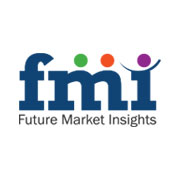According to a the latest market report published by Future Market Insights titled, “Smart Factory Market – Global Industry Analysis and Opportunity Assessment, 2015-2025,” the market was valued at US$ 51.9 Bn in 2014 and is expected to register a CAGR of 13.3% from 2015 to 2025. Growth of the smart factory market is primarily driven by rising focus on advanced manufacturing techniques. Furthermore, developments in information and communications technology (ICT), increased focus on energy consumption, rising prices and stringent environmental regulations are expected to be key factors driving growth of the smart factory market over the forecast period.
A smart factory is an advanced and automated manufacturing facility that facilitates rapid, efficient and safer means and approaches to production and manufacturing of various products and equipment. In an era of digital manufacturing, the gap between the physical and digital world is fading swiftly and being replaced with an entirely new way the manufacturing sector functions.
The global smart factory market is segmented on the basis of market structure, component, manufacturing vertical and region. Market structure includes to collect, to connect, to analyse and to control. A detailed analysis of each segment is presented in the report to deliver an accurate view of the market.
Browse the full “Smart Factory Market – Global Industry Analysis and Opportunity Assessment, 2015-2025” market research report at http://www.futuremarketinsights.com/reports/smart-factory-market
On the basis of manufacturing vertical, the smart factory market is segmented into automotive & transportation, food & beverages, electrical & electronics, aerospace & defence, oil & gas, garment & textile, chemical and others (healthcare & pharmaceutical). Among these, the automotive & transportation segment dominated the global smart factory market in terms of revenue contribution in 2014. Growth of this segment is primarily driven by increasing investments by leading automobile manufacturers. In September 2015 for example, German luxury car manufacturer Mercedes-Benz announced an investment of US$ 1.3 Bn to expand and upgrade its SUV manufacturing unit in Alabama, U.S. This expansion would add 300 new jobs and support end-to-end digitalization of the production process as a part of the company’s smart factory initiative. Thus, high demand from key verticals is a primary factor driving the growth of smart factories, globally.
Request Free Report Sample@ http://www.futuremarketinsights.com/reports/sample/rep-gb-446
This report also covers trends driving growth of each market segment and offers analysis and insights about market potential across key regions namely North America, Latin America, Europe, Asia Pacific (APAC) and the Middle East & Africa. Furthermore, the market is sub-segmented on the basis of major countries in each region in order to provide a regional analysis of the overall market. Asia Pacific was the largest revenue contributor to the global smart factory market, accounting for US$ 20.4 Bn in 2014. This is mainly attributed to increasing investment in manufacturing plants in the region. In April 2015 for example, the South Korean government along with Samsung Electronics announced an investment of US$ 12.6 Mn to promote the smart factory concept in the country. Smart factory market in Europe accounted for US$ 14.7 Bn in 2014 and is expected to register a CAGR of 14.3% during the forecast period. Growth of the market in this region is expected to be driven by increasing government support for development of innovative production technologies in countries such as Germany and the U.K. Also, increasing spending by key players is expected to further drive growth of the market in Europe.
Request For TOC@ http://www.futuremarketinsights.com/toc/rep-gb-446
Key players in the global smart factory market include ABB Group, Rockwell Automation, Inc., General Electric Co., Siemens AG, Oracle Corporation, IBM Corporation, SAP SE, PTC Inc., Accenture PLC and Atos SE. These players focus on mergers and acquisitions, new product launches, expansions and partnerships in order to remain competitive in the market. A competitive dashboard has also been included in the report to provide detailed information about key players in the market.

